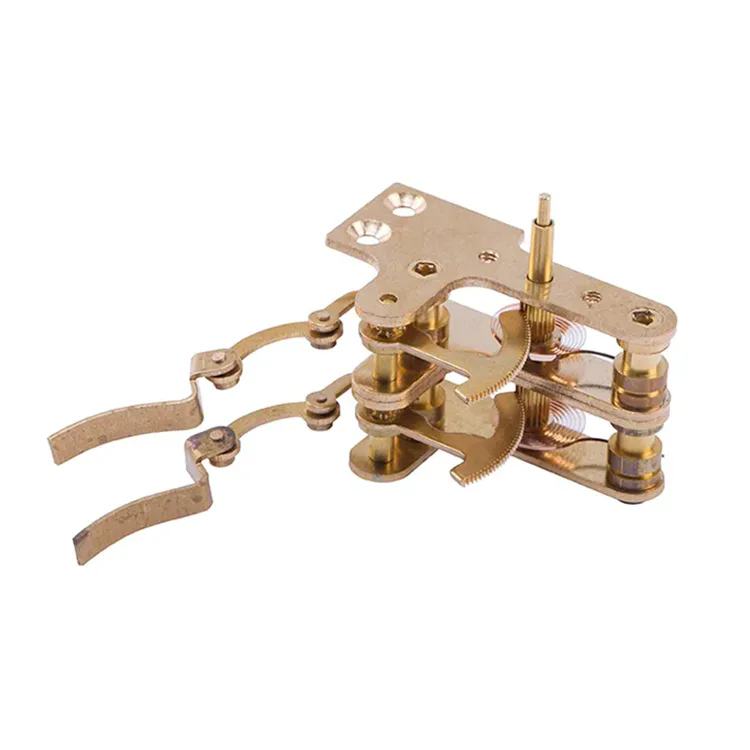The Importance of Pressure Measuring in Modern Systems
2025-02-06
Pressure is one of the most critical parameters in many industrial, scientific, and engineering systems. From ensuring the safety of boilers to controlling the flow of fluids in pipelines, accurate pressure measurement is essential for maintaining system stability, efficiency, and safety. In this blog, we will explore the significance of pressure measuring, the technologies used, and the wide range of applications in which pressure measurement plays a crucial role.
What is Pressure Measuring?
Pressure measuring refers to the process of quantifying the force applied by a fluid (liquid or gas) against a surface, typically in terms of units like Pascals (Pa), bars, or pounds per square inch (psi). Pressure measurement is vital because it provides real-time data for controlling processes, detecting anomalies, and ensuring that systems operate within safe and efficient parameters.
Why is Pressure Measuring Important?
1. Safety: In many industries, pressure levels are closely linked to the safety of the system and personnel. For instance, in pressurized vessels, steam boilers, or gas pipelines, monitoring pressure ensures that these systems do not exceed their design limits, which could result in catastrophic failures, explosions, or leaks.
2. Efficiency and Performance: Accurate pressure measurement helps optimize system performance. For example, in HVAC systems, maintaining the correct pressure in refrigerant lines ensures the system runs efficiently and achieves the desired cooling output. Similarly, in manufacturing processes that rely on hydraulic systems, maintaining consistent pressure ensures precision and quality.
3. Preventing Damage and Downtime: In systems like pumps, compressors, and engines, monitoring pressure levels can prevent equipment failure. High or low pressure can indicate potential faults or impending malfunctions, allowing operators to intervene before significant damage occurs. This proactive approach reduces downtime and maintenance costs.
4. Quality Control: Pressure control is essential in industries like pharmaceuticals, food production, and chemicals, where precise conditions are required for product quality. For example, in the food industry, pressure is used to control pasteurization processes, while in pharmaceuticals, pressure gauges ensure the integrity of packaging and sterilization.
Technologies Used in Pressure Measurement
Various technologies and instruments are used to measure pressure, each offering specific advantages depending on the application. The most common types of pressure measuring devices include:
1. Bourdon Tube Pressure Gauge: One of the oldest and most widely used types of mechanical pressure gauges. It uses a curved tube that straightens out when pressure is applied, which then moves a pointer on a dial. This is suitable for general industrial applications.
2. Diaphragm Pressure Gauges: These gauges use a flexible diaphragm that moves in response to pressure. They are more accurate than Bourdon tube gauges and are commonly used in applications where higher sensitivity is needed, such as in medical devices or laboratory equipment.
3. Strain Gauge Pressure Transducers: These electronic devices convert the mechanical displacement of a pressure element into an electrical signal. Strain gauges are highly accurate and can be used for both low and high-pressure measurements, making them ideal for applications like aerospace, automotive, and research labs.
4. Digital Pressure Transmitters: These devices offer precise digital readouts of pressure measurements. They are highly accurate, easy to calibrate, and often come with features like remote monitoring and data logging. Digital transmitters are commonly used in industries that require high-precision measurements, like oil and gas, power generation, and pharmaceuticals.
5. Capacitive Pressure Sensors: These sensors measure pressure by detecting changes in capacitance between two conductive plates. They offer high accuracy and are commonly used in clean environments, such as in medical or food industries, due to their reliability and non-intrusive nature.
6. Piezoelectric Pressure Sensors: These sensors use materials that produce an electric charge when subjected to mechanical stress. They are ideal for dynamic pressure measurements, such as in high-frequency applications like engine testing or acoustic pressure sensing.
Common Applications of Pressure Measuring
Pressure measuring devices are used across a vast array of industries and applications. Some of the most common include:
Oil and Gas Industry: Pressure measurement is critical in drilling operations, pipeline management, and gas extraction. Real-time pressure data is used to monitor well conditions, manage flow rates, and ensure that the system remains within safe operating pressures.
Aerospace: In aircraft systems, pressure measurement is essential for controlling cabin pressure, fuel systems, and hydraulic systems. Accurate pressure data ensures that systems operate efficiently and safely during flight.
Automotive: In modern vehicles, pressure sensors are used in the engine, transmission, and tire systems. They help optimize engine performance, improve fuel efficiency, and ensure safety by monitoring tire pressure.
Water Treatment: Pressure is monitored in water distribution and treatment systems to ensure optimal flow and prevent leakage. Pressure measurement also helps manage pumps and filtration systems effectively.
Manufacturing and Production: Pressure control is vital in many manufacturing processes such as injection molding, pneumatic systems, and hydraulic presses. Accurate pressure ensures product quality and process consistency.
Medical Devices: In medical applications, pressure sensors are used in devices such as blood pressure monitors, respiratory machines, and infusion pumps. Precise pressure control in these devices is necessary for patient safety and effective treatment.
Challenges in Pressure Measurement
While pressure measurement technologies have advanced significantly, there are still challenges in certain applications:
1. Extreme Temperatures: High or low temperatures can affect the accuracy and longevity of pressure sensors. Special materials and designs are often required for such extreme environments.
2. Corrosive Environments: In industries like oil and gas or chemicals, pressure measuring devices are exposed to corrosive substances. Choosing the right material, such as stainless steel or ceramic, is crucial to ensure long-term durability.
3. Calibration and Maintenance: Regular calibration is essential for accurate measurements. Over time, pressure sensors can drift, which requires routine maintenance to ensure they continue to operate within specification.
4. Vibration and Shock: In industrial settings, equipment vibration or shock can affect pressure measurements. Specialized mounts and protective casings are used to mitigate these impacts.
Conclusion
Pressure measuring is an integral part of modern systems across many industries. Whether ensuring the safety of a steam boiler, optimizing the performance of a vehicle engine, or guaranteeing the quality of a pharmaceutical product, accurate pressure measurement is crucial for maintaining safe, efficient, and reliable operations. With the advancements in sensor technology, pressure measurement continues to evolve, enabling industries to meet the increasing demands for precision and performance in an ever-changing world.



